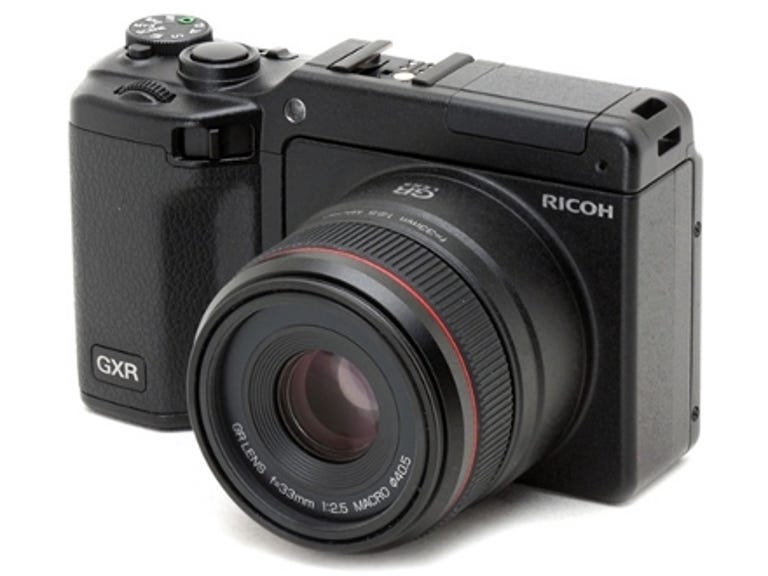 Why You Can Trust CNET
Why You Can Trust CNET Ricoh GXR review: Ricoh GXR
The modular GXR camera system is barmy, using interchangeable lens units that also house a sensor and image-processing engine. But it's also brilliant -- its components are superbly constructed, it offers dSLR levels of versatility, and its image quality is generally very good
The Ricoh GXR camera system is so crazy that it's hard to believe anyone actually had the nerve to put this idea forward. Cameras having interchangeable lenses is a concept we can understand. It makes sense. But a body with interchangeable camera units, comprising a lens, sensor and image-processing engine? That's mental. And, if that's not mad enough, prices for the GXR start at around £650, and that's just for the basic body and the S10 camera unit with a 24-72mm lens.
The Good
The Bad
The Bottom Line
Quality in abundance
If you're worried that the interchangeable camera units will give the GXR a rickety, bodged-together feel, don't be. Once the units are clipped on, the whole package is as solid as a rock, and the GXR looks, feels and handles like any other compact camera.

Actually, that's not quite true. The alloy body and matte black finish give it a really tough, purposeful feel, and the controls are excellent, both in their operation and their layout. Ricoh might not be one of the big names in photography these days, but it's been making cameras for decades, and the GXR (along with the GR Digital III) shows it knows exactly how to make a top-quality, professional camera.
The GXR offers fully automatic operation, but really it's designed for users who already know what shutter speeds, apertures and ISOs they want to use, and who want to be able to make these and myriad other manual adjustments with just a couple of clicks and a spin of a dial. In fact, there are two adjustment dials (one configurable), two customisable function buttons and a lockable mode dial. There are digital SLRs that don't offer this kind of hands-on control, yet the GXR's exterior still doesn't feel cluttered.
The picture quality from the 24-72mm lens unit isn't up to dSLR standards because it uses a smaller 1/1.7-inch sensor, but that's the price you pay for a compact lens with that kind of zoom range. The image quality is still more than a match, however, for that of the Canon PowerShot G11 or any other pro-style compact camera (Micro Four Thirds cameras excepted). The images from the 50mm A12 macro unit are excellent -- and this does have an APS-C sized sensor.
Vicious prices
The GXR has one giant, inescapable drawback. Each time you buy a lens, you're paying for a sensor and image-processing engine too. Ricoh argues that this allows for the perfect pairing of lens and sensor, which is all very well, but it inevitably increases the price, putting even the cheapest body and 24-72mm lens combination into semi-serious dSLR territory.
Then there's the variation in sensor sizes. The 50mm macro unit comes with an APS-C-sized sensor, but the 24-72mm unit has a far smaller 1/1.7-inch sensor of the kind you'd find in a high-end compact. You're getting dSLR quality in a compact camera, then, but only some of the time.
Also, since we're being picky, the 50mm macro lens' autofocus is pretty darned slow, making it tricky to take hand-held shots when you get really close to a subject -- it's often drifted out of focus before the camera's made its mind up, making a tripod almost essential. It's an issue with macro lenses generally, but it seems just slightly worse with this one.
Conclusion
On paper, the Ricoh GXR camera system seems nuts, but, when you actually use it for real, everything changes. Compact and exceptionally well made, it's designed for serious photographers who want tools not gimmicks, and accessibility not automation. It's both barmy and brilliant at the same time.
Edited by Charles Kloet
